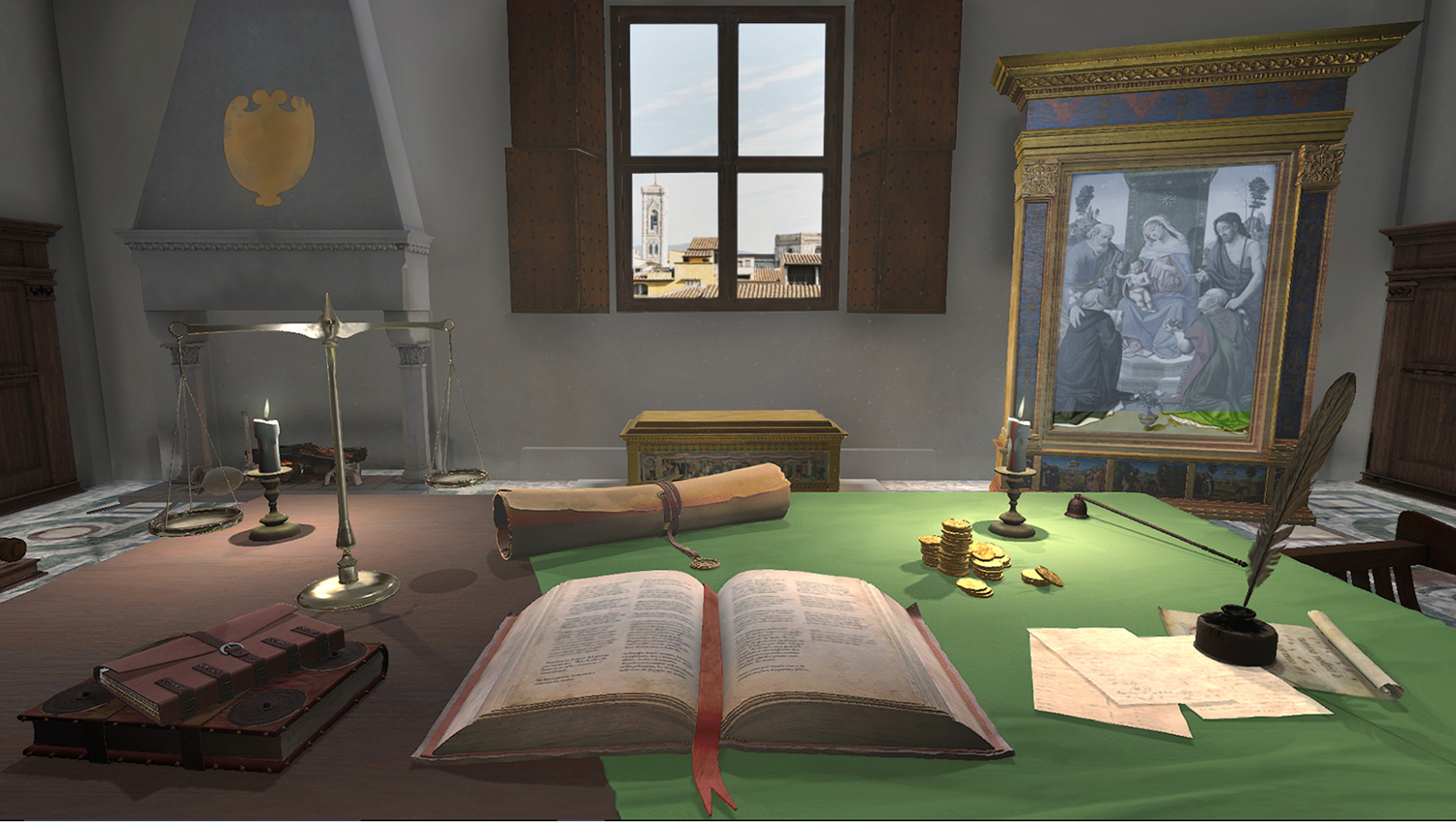Student-developed art history video game earns confab honor

André Thomas
“ ARTé Mecenas ,” an instructional video game initially developed by Texas A&M [visualization] (http://viz.arch.tamu.edu/) students to supplement undergraduate art history courses, was recognized as one of the best examples of an industry subgenre known as “serious games” at a November 2017 conference for professionals who work with training, education and simulation technologies.
The game, in which players create iconic Renaissance art as a member of the powerful 15th century merchant/banking Medici family, earned the Serious Games Showcase and Challenge Innovation Award at the Interservice/Industry Training, Simulation and Education [Conference] (http://www.iitsec.org/) in Orlando, Fla.
I/ITSEC defines innovation as a characteristic or technique that enhances, in a new and different way, serious games designed for a purpose other than entertainment. The technique can be related to hardware integration, instructional design, game design or a content topic.
In “ARTé Mecenas,” players learn the interconnectedness of local and international economies in Renaissance Italy and how those economies influenced art and art patronage by navigating the tumultuous political, social and economic conditions of the day while creating the era’s renowned artworks, monuments and institutions.
The game was hatched in the [Learning Interactive Visualization Experience Lab] (http://live.viz.tamu.edu/) , a student video game design unit founded by Andre Thomas, a Department of Visualization faculty member who previously led graphics development, planning and implementation for EA Sports’ powerhouse lineup of football videogames.
It was further developed, tested and distributed globally by [Triseum] (http://triseum.com/) , a Bryan educational video game development company also founded and led by Thomas.
Richard Nira
rnira@arch.tamu.edu
Tags
Related Posts

Viz ranked as top public program by College Magazine
NSF group melding art, science learning

Pixar Viz alumnus enlightens students with technical skills
Texas A&M ranked with top animation schools in nation

EA Sports graphics head joins Texas A&M Viz faculty
Follow Us
Facebook Twitter Vimeo Youtube Flickr RSS
Recent Posts

Planning prof heads study of disaster housing aid

A message from the dean

Former student remembered as expert planner

Leading educator named new head of Architecture Dept.





_thumbnail_small.png)
